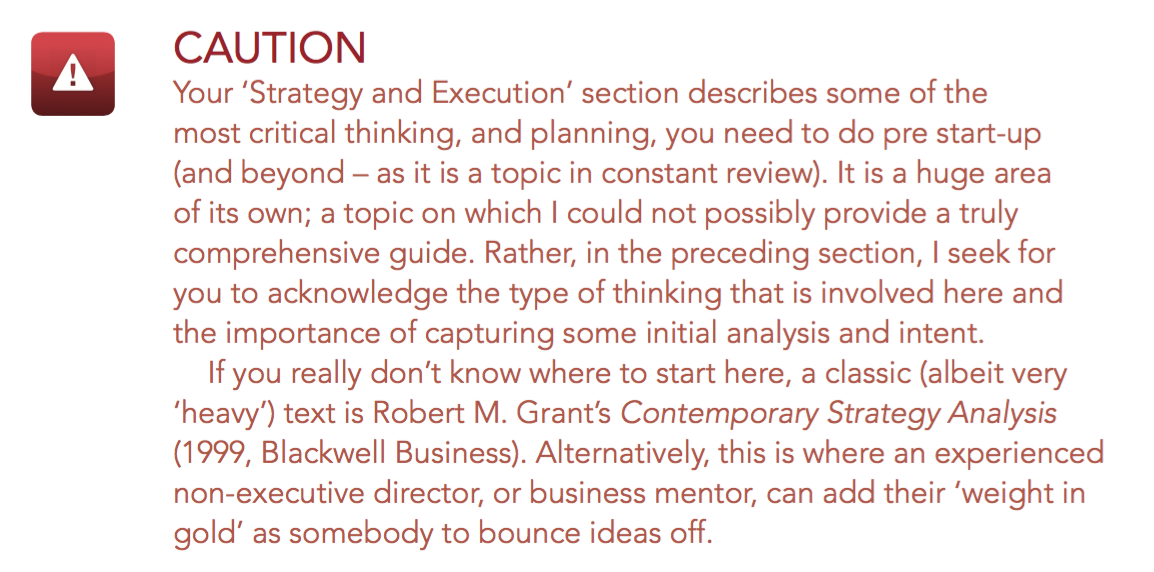Business Planning | Strategy and Execution
Following on the series of business planning related blog posts including:
What a good business plan looks like?
Developing a Business Planning Process
Professional Service Leverage Models
Leverage in a consultancy business
Vision, Mission and Objectives
Building a Service Proposition Framework
Market and Competitor Analysis
… this post looks at another key business plan element: Strategy and Execution.
After market and competitor analysis, you should be in a position to determine how you best obtain competitive advantage over others*. Competitive advantage can be sourced in multiple areas – your service offering, your service style, geographic reach, industry expertise, relationships, proprietary tools/methodologies, recruitment/training strategy, pricing etc. The list is long.
This part of the plan is for you to describe a business strategy or the ‘stepping stones’ you seek to traverse in relation to the establishment and ongoing build of competitive advantage. Another way of looking at it is to describe the capabilities you seek to explore initially, and then build upon, to grow your business.
Three primary dimensions of this question are: services offered, client sectors you specialise in and geographic reach. As such, your plan could seek to give initial definition to how you see your firm’s ‘footprint’ develop across these dimensions. For example, in phase one you might envisage the provision of a basic set of services to sector x in geography y; you might then envisage the logical progression to be sector expansion in the same geographic market or, perhaps, you reason that competitive advantage will come more from being a specialist in sector x but this is easily developed in terms of geographic expansion. The point of this plan is not to give you an immutable roadmap, but rather an intelligent sense of direction around which you can assess, review and pivot in the future.
Remember, though, all the other potential dimensions of competitive differentiation and advantage. Where there are service delivery aspects that you plan to accentuate over and above the competition then use this part of the plan to describe how you will do so. Often, your differentiation will only come about as a combination of these elements so it is important you consider them all.
As your firm grows and matures, so you will need to give more thought to how your business development capability (marketing and selling) is going to continue to develop and excel – in terms of organisation, reward mechanisms, capability development programmes, potential partnering etc.
Of course, as well as being competitively differentiated, this part of your plan should also focus on building all the solid components of a sound operation. Step-by-step you need to develop the operational capability areas that are such a significant aspect of any ultimate valuation on your business – the ‘Multiple Enhancers’ (MEs). There is little point in having a brilliant service proposition in a growing market, if the basic infrastructure of your firm is unable to support and sustain it.
As I mentioned in the ‘Planning Process’ blog, we would have planning sub-teams covering each of these ME dimensions. This level of detail can evolve as your firm grows (an inaugural plan clearly has to delimit its ambition in this area to the resources immediately available to it). In the fullness of time, however, you should expect such ‘ME Plans’ to detail the following aspects:
- Team (and lead person).
- Current situation.
- Recognised ‘best practice’ – description of any benchmark organisations or exemplar practices.
- Objectives and budget – SMART targets (with particular focus on forth- coming financial year).
- Targeted ‘End State’ – a description of the intended capability (say, for example, at the time you are targeting for a sale).
Finally, the objectives you laid out in the Vision–Mission–Objectives part of the plan should be directly linked to this strategy. Essentially, achievement (or not) of the objectives you set should be the critical test as to whether you have been successful in your stated, strategic intent.
* There are many strategic analysis tools that can facilitate this thinking. One of the simplest, but most effective, is the SWOT tool – a systematic analysis ‘in the round’ of your firm’s strengths, weaknesses, opportunities and threats as a precursor to setting your strategic plans.
————
If you are interested in re-charging your business ambition/strategy/plans, Dom runs an occasional (three-day) Five-Year Entrepreneur Retreat – see here for previous delegate testimonials and details on future presentations. If you would like to make a reservation (capped to 14 attendees per Retreat) please drop a line via the contact page.
DOWNLOAD GUIDE 03 (BUSINESS PLANNING) HERE >>>




